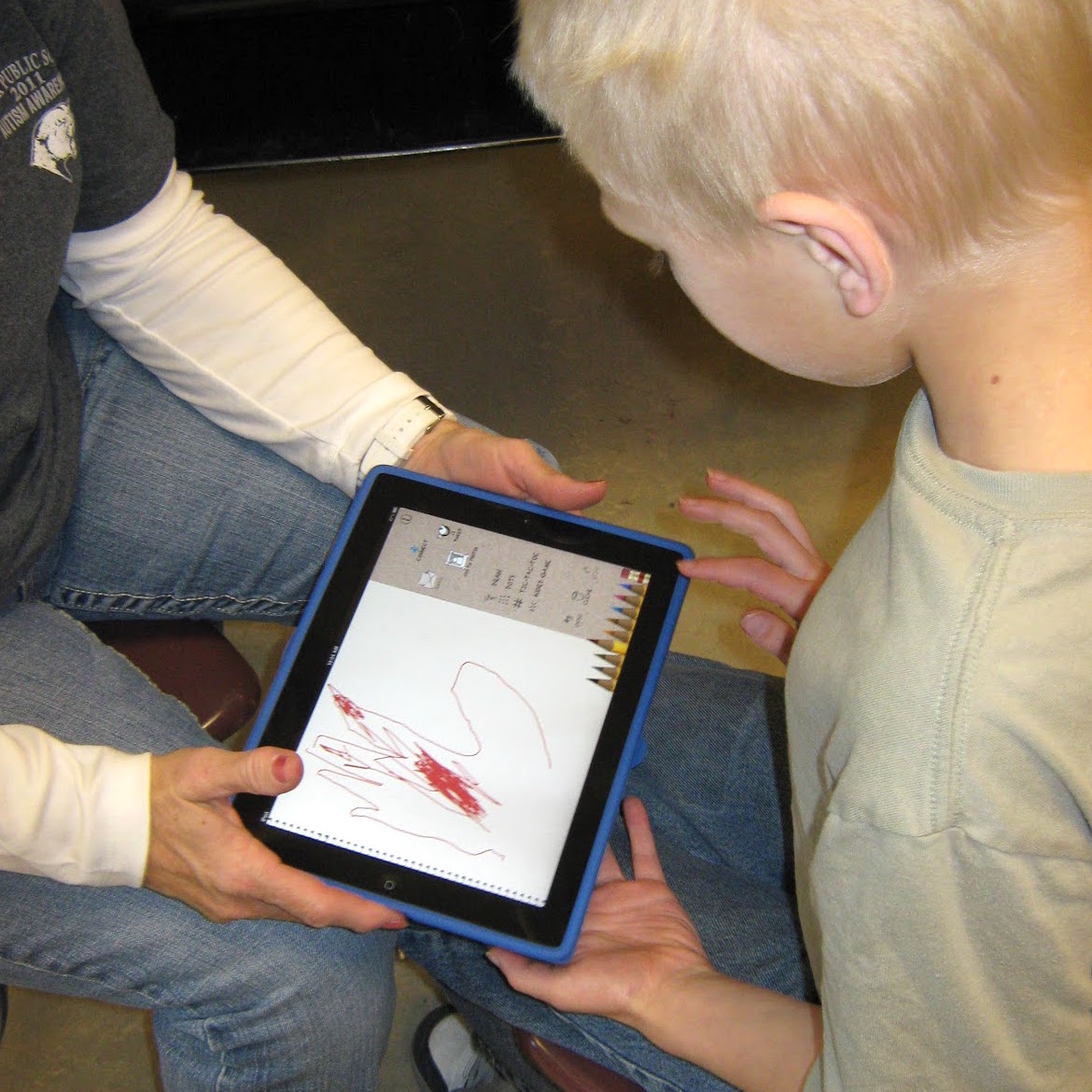There are certain students who forever stay in our hearts. One of mine is a student I’ll call Tim. When Tim started at my school, he was a 5th-grade student within our autism program.
The first year I taught Tim was rough on both of us. In the beginning, he spent most of the class period folded in half, hiding under his desk engaged in repetitive behaviors. I worked diligently with his paraprofessional to get him to do anything. We found that he liked the iPad, so we would have him work on my iPad for most of the class, but there were still times he had to be removed from the room. By the end of 5th grade, he was doing better and we were able to work on “regular” projects, using the iPad as a reward.

6th grade was better, and most of the time he would create the projects as assigned. By the time he left in 7th grade, you wouldn’t have known him to be the same student. He asked questions, verbalized his plans for his projects, and wrote about his creations. He worked with classmates, and he handled the crazy, unstructured flow of the art room with grace.
While I know that most of his growth was due to the amazing teachers and paraprofessionals that worked with him day in and day out, I also know that through art, he was able to find his voice and become a successful student. His growth had me choking back tears when he gave me a brief hug after telling me how excited he was about finishing his final clay project.
Teaching children with autism presents some unique challenges because of the range of behaviors. No two students will react the same way in the same class on the same day. While not every student with autism I have taught has had the same success as Tim, I have learned a few things about working with the unique needs of these special students.
How to Work with Students with Autism in the Art Room
1. Be willing to change your lesson.
Many children with autism are fixated on specific topics. Simply allowing them to adjust the subject matter of the project to reflect their passion will help them invest in your class. This year I have a student who has found a way to incorporate Mario and Luigi into every single project. The creative thinking required to finish the projects while including his favorite subject is impressive. Here is his geometric shape quilt.

2. Set aside a special workspace.
Remember that the child with autism’s senses are often heightened. Bright lights, loud classmates, clicking pens, and uncomfortable chairs can often overwhelm a child with autism. Remembering that they might need to work at a smaller, quieter area is important to their ability to be successful. I try to have my students with autism work at tables with two other students versus the usual three. I also like their tables to be located near the back of the room, by the window, or by the door so they have a little more “space” from their peers.
3. Use simple, specific directions and limit choices.
Because the child with autism’s mind is processing all of the stimulus from the outside world while listening to the teacher, they can struggle to remember a long series of directions. Giving your students shorter, more specific directions will help them. They likely won’t understand your idioms or sarcasm, but they will be able to process a short, specific to-do list. Students with autism can also be overwhelmed and lost when given open-ended questions or tasks. Limiting them to a few choices makes it easier to process the concept and, therefore, to be successful.
4. Understand your students’ skill levels.
Like all students, students with autism will fall on a wide spectrum of artistic ability. Some students won’t possess the fine motor skills necessary to make typical grade level work. On the other hand, some students with autism will be the most talented students you’ll ever teach. It’s important to understand where your students’ skills are and meet them there.
5. Allow time to adjust to new things.
Changes in class or routine can be challenging for the student with autism. Having a set routine and allowing time for students to adjust to the new room, classmates, and subject matter is important for their success. You may be blessed, like I am, to have incredible paraprofessionals that help students settle in. However, if you’re flying solo, you could try something as simple as having a coloring sheet or blank free drawing paper at their seats every time they come to class.
6. Use peer modeling.
As my students progress through the art room and become more adjusted, partnering them with other classmates can be beneficial. It seems that one or two students in each class naturally show themselves to be helpers. These students are willing to sit with my students with autism and provide assistance. They accept the unique behaviors of their classmates and help them feel included.
7. Accept stimming.
Stimming is a series of repetitive behaviors that students with autism may display. This can include flapping, rocking, tapping, and more. Accept it. They don’t do it to be rude or disrespectful, rather, these behaviors help students with autism deal with the stimulation that is overwhelming. Understand that students with autism may behave differently than other students. I once worked with a student who needed to touch my hair while listening to the demonstration. While I wouldn’t be comfortable if most students did this, I knew that it was what he needed to be able to focus. He could handle being surrounded with other people and focus on the lesson if he could touch a section of my hair.
Tim has moved on to the high school now, and I don’t get to see him in class anymore. However, I still get a big “fist bump” when I see him around town. If I had been unwilling to make a few adjustments to my class, this story could have ended very differently. Working with students with autism will require you to understand their unique personalities and needs, but it also gives you the opportunity to work with some truly amazing students. A few adjustments to your art room will make the process easier on you and on them. It can also leave you with some special people forever in your heart. If you are looking for even more information about working with students with autism in the art room, be sure to check out our class Autism and Art where you’ll work to create customized resources to use with your specific students.
How do you accommodate for students with autism in your art room?
Do you have some favorite memories to share?
Magazine articles and podcasts are opinions of professional education contributors and do not necessarily represent the position of the Art of Education University (AOEU) or its academic offerings. Contributors use terms in the way they are most often talked about in the scope of their educational experiences.






